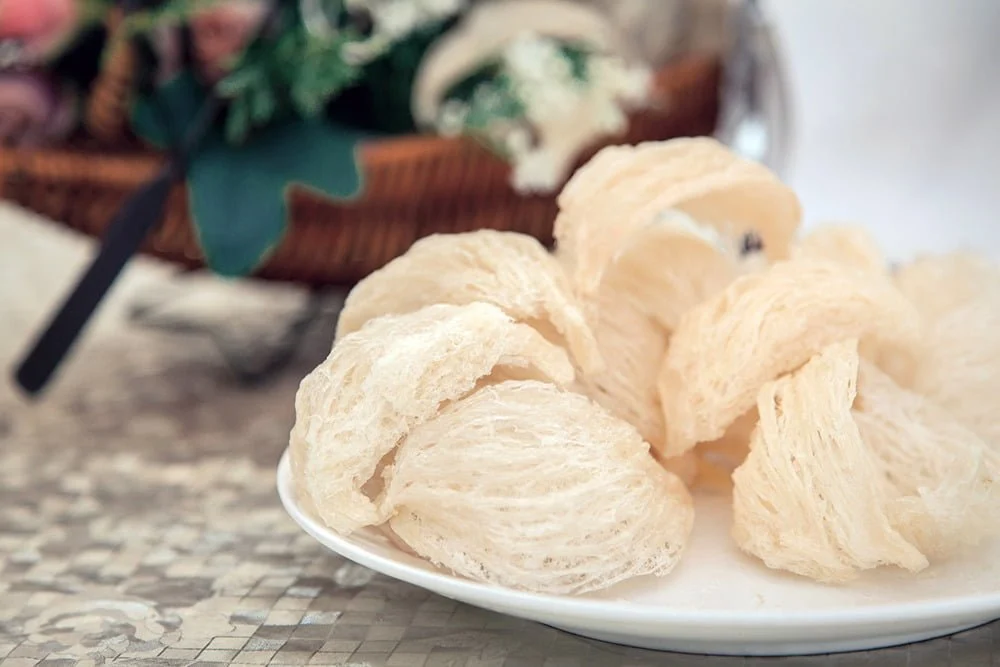News
Fresh Bird’s Nest Or Dried Bird’s Nest Which Is Better? Which Kind Should I Buy That Is Rich In Nutrients?
## Fresh Bird’s Nest or Dried Bird’s Nest: Which is Better? Which Kind is More Nutrient-Rich?
Bird’s nest, a delicacy highly cherished for its health benefits, has gained widespread popularity, especially in Asian cultures. This luxurious food item is believed to promote good health, boost immunity, enhance skin complexion, and improve overall vitality. However, if you are considering incorporating bird’s nest into your diet, you might be wondering whether **fresh** or **dried bird’s nest** is the better choice. In this comprehensive guide, we will compare the two types, evaluate their nutritional value, and help you decide which one is best suited to your needs.
### 1. What Is Bird’s Nest?
Bird’s nest refers to the **nest built by swiftlets** (a type of bird found mainly in Southeast Asia) using their saliva. These nests are predominantly composed of **glycoproteins**, which are responsible for the various health benefits attributed to bird’s nest consumption. Traditionally, bird’s nests are harvested from coastal caves and cliffs, though modern farms now cultivate them in controlled environments to ensure a sustainable and ethical supply.
### 2. Fresh Bird’s Nest vs. Dried Bird’s Nest: An Overview
Before diving into the benefits and drawbacks of each type, let’s first understand what distinguishes **fresh bird’s nest** from **dried bird’s nest**:
– **Fresh Bird’s Nest**: Also known as “wet” bird’s nest, it has a **soft, gelatinous texture** and is typically packaged in jars or containers. Fresh bird’s nests are usually **pre-soaked, cleaned, and ready for immediate use**. They need to be stored in a refrigerator and have a shorter shelf life, usually around 1 to 2 weeks.
– **Dried Bird’s Nest**: These are **dehydrated** nests that have been cleaned and dried. Dried bird’s nests are **lighter in weight** and have a much longer shelf life, often extending for years if stored properly. However, they require **soaking and preparation** before consumption.
### 3. Nutritional Comparison
Both fresh and dried bird’s nests are packed with nutrients, including proteins, amino acids, minerals, and collagen. However, there are slight differences in their nutritional profiles due to their **processing and storage methods**.
**Fresh Bird’s Nest**:
– Contains higher moisture content, making it easier to digest and absorb.
– Nutrients may be slightly more **bioavailable** due to minimal processing.
– Ideal for individuals looking for a quick and convenient health boost.
**Dried Bird’s Nest**:
– Nutrients are more **concentrated** because of the drying process.
– Longer shelf life preserves its **nutritional value** over time.
– More cost-effective as it can be stored for extended periods without spoilage.
### 4. Which Type Is Richer in Nutrients?
While both types are nutrient-dense, **dried bird’s nest** generally contains a higher concentration of nutrients since it loses water content during the drying process. However, fresh bird’s nests may have a slight advantage in **digestibility** and **absorption**, especially if consumed shortly after being harvested.
The choice ultimately depends on your **lifestyle and dietary preferences**:
– If you prioritize **convenience** and are willing to consume it within a short period, fresh bird’s nest might be the better option.
– For those who prefer to buy in bulk or want to store it for longer, dried bird’s nest is a **practical** and **cost-efficient** choice.
### 5. Pros and Cons: Fresh Bird’s Nest
**Pros**:
– **Convenient**: Requires minimal preparation; simply open the jar and enjoy.
– **Higher moisture content** helps retain its natural gelatinous texture.
– Ideal for individuals who may have difficulty digesting tougher foods, such as the elderly or those with digestive issues.
**Cons**:
– **Shorter shelf life**: Must be refrigerated and consumed within a few weeks.
– Generally **more expensive** due to additional processing and packaging.
– Can be prone to spoilage if not stored properly.
### 6. Pros and Cons: Dried Bird’s Nest
**Pros**:
– **Long shelf life**: Can be stored for years in a cool, dry place.
– More **cost-effective**, especially for long-term consumption.
– Nutrients are more **concentrated** due to the drying process.
**Cons**:
– Requires **soaking and preparation**, which can be time-consuming.
– Quality can vary significantly depending on the source and processing methods.
– May be harder to digest for some individuals due to its denser texture.
### 7. Health Benefits of Consuming Bird’s Nest
Regardless of whether you choose fresh or dried bird’s nest, both types offer a range of health benefits:
– **Boosts Immunity**: The glycoproteins and amino acids in bird’s nest are believed to strengthen the immune system, helping the body fight off infections and illnesses.
– **Improves Skin Health**: Bird’s nest is known for its ability to **promote collagen production**, resulting in smoother, more youthful-looking skin.
– **Enhances Respiratory Health**: Traditionally, bird’s nest has been used to alleviate **coughs, asthma, and other respiratory issues**.
– **Supports Digestion**: Its high nutrient content makes it beneficial for improving digestion and nutrient absorption.
– **Anti-Aging Properties**: The antioxidants in bird’s nest help combat **free radicals**, which are associated with aging and chronic diseases.
### 8. How to Choose the Best Bird’s Nest
When purchasing bird’s nest, whether fresh or dried, it is essential to consider factors such as **quality, source, and purity**. Here are some tips to help you make the best choice:
– **Look for reputable brands**: Choose products from well-known suppliers with high standards for quality and safety.
– **Check the color**: Authentic bird’s nests should have a natural ivory or off-white color. Avoid those that are too white, as they might have been bleached.
– **Inspect for impurities**: Ensure that the bird’s nest is free of feathers, dirt, or any other contaminants.
– **Consider certifications**: Look for certifications that confirm the product’s authenticity and safety, especially if purchasing online.
### 9. How to Prepare and Consume Bird’s Nest
#### For Fresh Bird’s Nest:
– Simply open the jar and **consume directly** or heat it slightly for a warm dessert.
– You can add it to **soups, porridges, or desserts** for an added nutritional boost.
#### For Dried Bird’s Nest:
– **Soak the nest** in water for several hours (typically 4 to 6 hours) until it softens.
– **Rinse and remove impurities** before cooking.
– Cook in a **double boiler** with water, rock sugar, and ginger to create a nourishing soup.
– Alternatively, incorporate it into recipes like **bird’s nest congee or sweet desserts**.
### 10. Final Verdict: Which Should You Buy?
To summarize:
– If you want a **quick, ready-to-eat option** with minimal preparation, **fresh bird’s nest** is the way to go. It is especially suited for those who value convenience and are willing to pay a premium for it.
– If you prefer to have more control over the **preparation process** and want a more **cost-effective** option with a longer shelf life, **dried bird’s nest** is your best bet.
Both types offer substantial health benefits, but the decision ultimately depends on your **lifestyle, budget, and preferences**.
### 11. Conclusion
Choosing between fresh and dried bird’s nest depends on your specific needs and circumstances. While fresh bird’s nest offers convenience and immediate consumption, dried bird’s nest is a long-lasting and nutrient-dense option for those who prefer bulk purchasing. Regardless of your choice, incorporating bird’s nest into your diet can significantly contribute to overall health and well-being.
Invest in **high-quality bird’s nest products** from trusted suppliers, and enjoy the multitude of benefits this ancient delicacy has to offer!
—
**Note**: Before starting any new dietary regimen, consult with a healthcare professional, especially if you have existing medical conditions or are pregnant.

